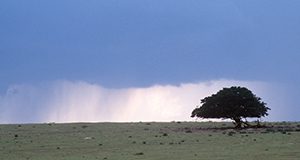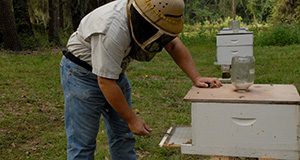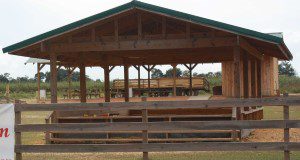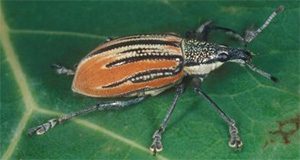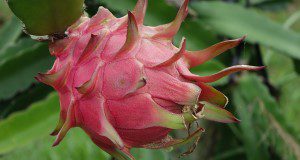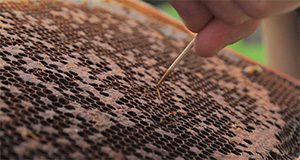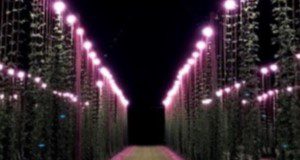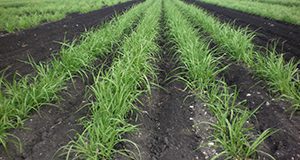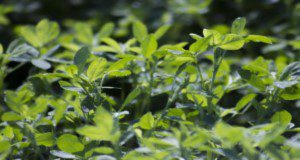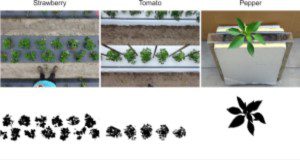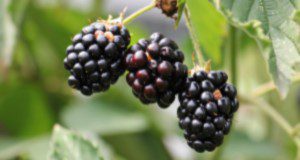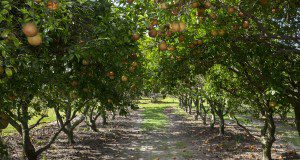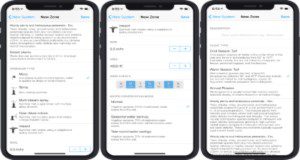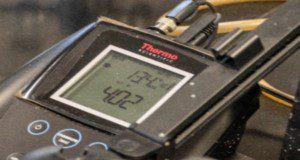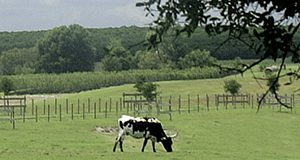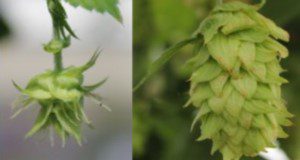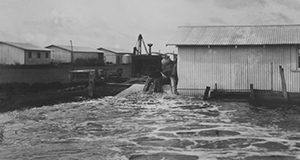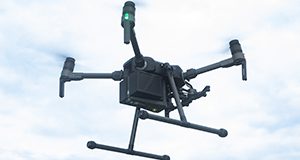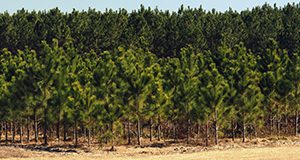This 8-page document gives an overview of Florida temperature and rainfall during the past 20 years based on historical FAWN data to provide information about the temporal and spatial trends of Florida weather and the frequency and size of extreme weather events such as heavy rainfall and drought. This document also investigates the characteristics of drought and heavy rainfall in relation to hurricanes and tropical storms. Written by Satbyeol Shin, Young Gu Her, Geraldina Zhang, and William Lusher, and published by the UF/IFAS Department of Agricultural and Biological Engineering, January 2020.
https://edis.ifas.ufl.edu/ae537
Category: Agriculture
How to quantify Varroa destructor in honey bee (Apis mellifera L.) colonies
The Varroa destructor mite, a devastating pest of western honey bees, can threaten a honey bee colony’s survival if it is left uncontrolled. This 8-page fact sheet written by Cameron Jack, Nathan Sperry, Ashley N. Mortensen, and Jamie Ellis and published by the UF/IFAS Entomology and Nematology Department explains how to monitor honey bee colonies to ensure that infestations of these destructive pests do not grow to dangerous levels.
https://edis.ifas.ufl.edu/in1257
Florida Agritourism Building and Fire Codes
Agritourism marries Florida’s two largest industries, tourism and agriculture, to provide an on-farm recreational experience for consumers. Although Florida trails many other states in the number of agritourism operations, the number of Florida farms offering recreational experiences more than doubled from 2007 to 2012. This new 4-page document describes building codes relevant to Florida agritourism operations. Written by Mary Beth Henry and Kathryn A. Stofer, and published by the UF/IFAS Department of Agricultural Education and Communication.
https://edis.ifas.ufl.edu/wc349
Citrus Pest Quick Guide: Diaprepes Root Weevil (Diaprepes abbreviates Linnaeus)
A one-page quick guide written by Lauren M. Diepenbrock and Jamie D. Burrow and published by the Entomology and Nematology Department presents the life cycle of the Diaprepes root weevil and provides several photos of the pest and the damage it causes to assist in identification.
https://edis.ifas.ufl.edu/in1249
Stem and Fruit Canker of Dragon Fruit in South Florida
Dragon fruit, also known as pitahaya, pitaya, and strawberry pear, is a group of vine-like, climbing cacti. In south Florida, production of dragon fruit has been steadily increasing since the 2000s, and growers in Florida consider dragon fruit as a potential alternative fruit crop to avocado and citrus, two economically important fruit crops largely impacted by laurel wilt and huanglongbing, respectively. This new 4-page article focuses on the symptomology and epidemiology of stem and fruit canker, a prevailing disease on dragon fruit. Suggested management strategies for the disease are also discussed based on recent studies conducted in south Florida. Written by Cheng-Fang Hong, Shouan Zhang, Romina Gazis, Jonathan H. Crane, and Jeff Wasielewski, and published by the UF/IFAS Plant Pathology Department.
https://edis.ifas.ufl.edu/pp355
Identification and Treatment of European Foulbrood in Honey Bee Colonies
European foulbrood is a bacterial disease that affects Western honey bee larvae. It is a concern to beekeepers everywhere, though it is less serious than American foulbrood because it does not form spores, which means that it can be treated. This 7-page fact sheet written by Catherine M. Mueller, Cameron J. Jack, Ashley N. Mortensen, and Jamie Ellis and published by the UF/IFAS Entomology and Nematology Department describes the disease and explains how to identify it to help beekeepers manage their colonies effectively and prevent the spread of both American and European foulbrood.
https://edis.ifas.ufl.edu/in1272
Hop Yard Establishment and Trellis Construction in Florida
Hops (Humulus lupulus L.) are an essential ingredient in brewing, adding bitterness and flavor to beer. Driven by the recent craft beer movement, hop production is expanding into nontraditional hop-producing states. In Florida, while commercial hop production is almost nonexistent, the number of craft breweries in Florida increased from 45 in 2011 to 285 in 2018, and the economic impact of Florida’s craft beer industry exceeds $3 billion. This new 7-page article, written by Shinsuke Agehara, Aleyda Acosta-Rangel, Zhanao Deng, Jack Rechcigl, and Simon Bollin and published by the UF/IFAS Horticultural Sciences Department, provides guidelines and considerations for building a hop yard in Florida, using the UF/IFAS Gulf Coast Research and Education Center’s research hop yard as a model.
https://edis.ifas.ufl.edu/hs1354
Sugarcane Cultivar Descriptive Fact Sheet: CP 06-2400, CP 06-2042, and CP 07-2137
This 5-page fact sheet provides basic information and yield and disease information for CP 06-2400, CP 06-2042, and CP 07-2137 to assist growers in better selection and management of these cultivars. Written by Hardev Sandhu, Matt VanWeelden, and Wayne Davidson, and published by the UF/IFAS Agronomy Department, December 2019.
http://edis.ifas.ufl.edu/sc106
Condensed Tannins in Forage Legumes
The use of tannin-containing forages has received attention from researchers around the globe because of potential benefits of condensed tannins to livestock health and nutrition as well as possibilities to reduce methane emission. This new 4-page publication of the UF/IFAS Agronomy Department targets two audiences: Extension faculty who need information on potential benefits and negative effects of condensed tannins to livestock production, and producers who intend to feed tannin-containing forages in their operation. Written by Flavia van Cleef and Jose Dubeux.
https://edis.ifas.ufl.edu/ag440
Simple Imaging Techniques for Plant Growth Assessment
Quantification of plant phenotypic traits, such as height, width, stem diameter, and leaf area, is often performed manually in the field; however, these measurements can be performed more quickly and precisely through simple imaging techniques using an image processing program. This new 5-page publication of the UF/IFAS Horticultural Sciences Department, written by Shinsuke Agehara, describes simple imaging techniques for plant growth assessment using the public domain program ImageJ.
https://edis.ifas.ufl.edu/hs1353
Choosing the Right Blackberry Cultivar in Subtropical Florida
Blackberry (Rubus spp.) is a deciduous berry crop and the fourth most economically important berry crop in the United States. Driven by the growing demand for blackberries, production recently expanded to the southeastern United States. In Florida, however, commercial blackberry production is limited primarily to small commercial U-pick operations. The main challenges include insufficient chill hours and poor fruit quality associated with the subtropical climate. This new 6-page article, a publication of the UF/IFAS Horticultural Sciences Department, will discuss important cultivar selection criteria and recommended blackberry cultivars in subtropical Florida. Written by Shinsuke Agehara, Syuan-You Lin, and Zhanao Deng.
https://edis.ifas.ufl.edu/hs1352
Florida Citrus Rootstock Selection Guide, 4th Edition
This updated 4th edition of the Florida Citrus Rootstock Selection Guide (FLCRSG) is a revision of the 2016 publication. The guide is a convenient, easy-to-use reference to 21 characteristics of 49 rootstocks. Of those, 12 are time-honored commercial rootstocks (highlighted in blue), which are the most reliably characterized. The next 13 rootstocks are minor commercial ones (highlighted in green) that are less frequently used today in Florida but may have been prominent at one time. The third group consists of the most recently released 24 rootstocks (highlighted in yellow) for which there is limited commercial experience. The new addition includes three new USDA rootstocks and updates information on a few traits. Written by William S. Castle, Kim D. Bowman, Jude W. Grosser, Rhuanito Soranz Ferrarezi, Stephen H. Futch, and Steve Rogers, and published by the UF/IFAS Horticultural Sciences Department.
https://edis.ifas.ufl.edu/hs1260
Smartirrigation Apps: Urban Turf
As freshwater resources become increasingly scarce, efficient irrigation scheduling methods that allow efficient irrigation water uses are required. Migliaccio et al. (2016) have developed an app called Smartirrigation Turf, an easy-to-use mobile tool that delivers information to improve irrigation scheduling for urban turf. The app was only available for Florida and Georgia, but recently, we have made improvements to the app and made it available to any location throughout the contiguous United States. The 7-page major revision, written by Haimanote K. Bayabil, K. W. Migliaccio, J. H. Debastiani Andreis, C. Fraisse, K. T. Morgan, and G. Vellidis, and published by the UF/IFAS Department of Agricultural and Biological Engineering, describes the changes made on the recently released Smartirrigation Turf app.
https://edis.ifas.ufl.edu/ae499
Citrus Soil pH Testing Procedures
Maintaining the correct soil pH is essential to ensure optimal plant growth and crop yield. This new two-page document is an instructional sheet for citrus soil pH testing, written by Kelly Morgan and published by the UF/IFAS Department of Soil and Water Sciences.
https://edis.ifas.ufl.edu/ss665
Food System Study of Martin County, Florida
Martin County, Florida has a rich agricultural history with farming and cattle ranching being important economic drivers since the early 1930s. Nevertheless, the county struggles to meet the balance between food supply and demand. Farmers often face challenges finding sizable, secure, well-paying markets, and the most consumers do not participate in local food transactions. This 4-page fact sheet written by William A. Messina, Jr., Lisa House, Yvette Goodiel, and Carol Albertsand published by the UF/IFAS summarizes two studies conducted to examine agricultural production in Martin County and its food processing, distribution and marketing systems and infrastructure to better identify potential constraints and opportunities for the local food system.
http://edis.ifas.ufl.edu/fe1071
Harvest Techniques for Hops (Humulus lupulus)
Hops (Humulus lupulus) are perennial plants commonly harvested for their mature strobiles, also referred to as cones, which are primarily dried and used as a bittering agent and preservative in beer production. The two primary factors of harvest timing and harvest method can have large impacts on the quality and economics of the finished product. The decision of when and how to harvest is important and should rely upon growing-region-specific environmental conditions, physical observations of the cones, and the wants and needs of the individual producer. This new 4-page publication of the UF/IFAS Environmental Horticulture Department describes the primary methods used in hop harvesting, including field, indoor, and machine harvesting. Written by Sean Michael Campbell and Brian J. Pearson.
https://edis.ifas.ufl.edu/ep578
Hurricane Preparedness for Forage Crops in the Southeast United States
This 4-page document provides information on preparing forage crops, conserved forage, and grazing areas for potential hurricane damage and alleviating hurricane damage on forage crops and grazing lands in the Southeast United States, with an emphasis on the Florida peninsula and Gulf Coast. Written by José C. B. Dubeux, Jr. and Edward K. Twidwell, and published by the UF/IFAS Agronomy Department, November 2019.
http://edis.ifas.ufl.edu/ag439
Citrus Soil pH Management
Management of both soil pH and nutrients is required to maintain soil fertility levels and ensure economic agricultural production. Maintaining soil in the 6.0-6.5 pH range is best for most crops including citrus. This new two-page publication of the UF/IFAS Department of Soil and Water Sciences, written by Kelly Morgan, explains the effects of soil pH on citrus as well as options for management.
https://edis.ifas.ufl.edu/ss666
Preflight and Flight Instructions on the Use of Unmanned Aerial Vehicles (UAVs) for Agricultural Applications
This 5-page document provides guidance on the appropriate use of unmanned aerial vehicles (UAVs) for agricultural applications in Florida. It contains step-by-step instructions for preparing a UAV for flight, creating a mission path (using flight mission planning apps), and collecting UAV-based data. Written by Sri Charan Kakarla, Leon De Morais Nunes, and Yiannis Ampatzidis, and published by the UF/IFAS Department of Agricultural and Biological Engineering, November 2019.
http://edis.ifas.ufl.edu/ae535
What Is the Value of an Existing Forest Stand?
Traditionally, the land expectation value (LEV) formula, the present value of perpetual cash inflows of timber revenues minus the present value of cash outflows of costs, has been employed as the main indicator of the value of a forest investment. However, when a forest stand is already established, the LEV approach is incomplete because it applies only to bare land. Thus, it is necessary to determine the value of a property with an existing forest stand. This 3-page fact sheet written by Andres Susaeta and Chris Demers and published by the UF/IFAS School of Forest Resources and Conservation provides the formula to determine the value of an already established forest stand at any stage of its development. This approach, known as the forest value formula, includes the value of the timber and the land. It can be used to compare the value of the stand when it is immediately harvested or when it is economically immature.
http://edis.ifas.ufl.edu/fr423
